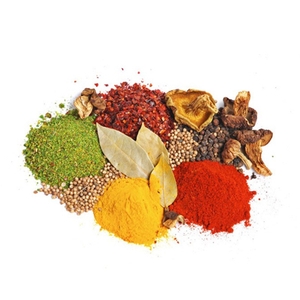Food
Myanmar Spices and Seasonings
- Details
- Hits: 6428
 Myanmar Spices and Seasonings
Myanmar Spices and Seasonings
Myanmar lies in a zone of the world historically famous for the spices and seasoning which add so much zest and flavour to the food.
Other countries may use these fragrant and aromatic leaves. roots and barks as condiments. but here. in their place of origin they are used tactically for their medicinal properties. In fact. science is now recognizing spices are bactericidal. they kill bacteria which may infect the food. They also keep bacteria from infecting the food. Myanmar people have been aware of this from historical times. and of other medicinal properties. so that a whole pharmacopoeia has been collected. There is a Myanmar saying: "food is medicine. medicine is food." Here are some spices commonly used in Myanmar dishes.
Basil: Ocimum. (pin zein:) The leaves are expectorant and carminative.
Caraway: Carum Casui: Used in meat dishes and to flavour pea rice.
Chili: The small green chillies known by the names of "sky-gazing or waiting for rain." "golden needle." "Indian yell." have the sharpest taste and hotness which spreads rapidly throughout the body. The larger ripe chilies are dried and pounded to make chili powder or are first roasted before pounding.
Coriander: (nan nan bin). The leaves serve as a garnish for the popular Myanmar snack. mohinga. and is also used to garnish athoke (salads). It is carminative.
Curry leaf: (pjin: do thein) Eaten with curry. If eaten in large quantities it acts as a gentle purgative.
Garlic: Widely used in curries. soups. salads and with ngapi. Garlic is prescribed in fevers. coughs. flatulence and affections of the nervous system. It is a reputed remedy for dyspepsia.
Galangal: Alpinia conchgera (ba de: go:). Essential to the broth in mohinga of the Rakhine nationals. The rhizome is aromatic. tonic. carminative.
Ginger: Used in curries. soups. and to overwhelm fishy smell. It is a grateful stimulant. expectorant and valuable for dyspepsia and throat troubles.
Pepper: Peppercorn may be added whole to dishes or in ground form. It is digestive. tonic and used with benefit in debility. flatulence. diarrhoea and coughs.
Tamarind: The pulp of tamarind pods is dried and used to add a fruity sourness to many dishes. Tender leaves and flowers are used for soups and salads. Tamarind is cooling and antibilious.
Turmeric: Adds colour and flavour to dishes. The rhizome is a household remedy used both internally and externally. Internally it is used as an anthelonintic.





